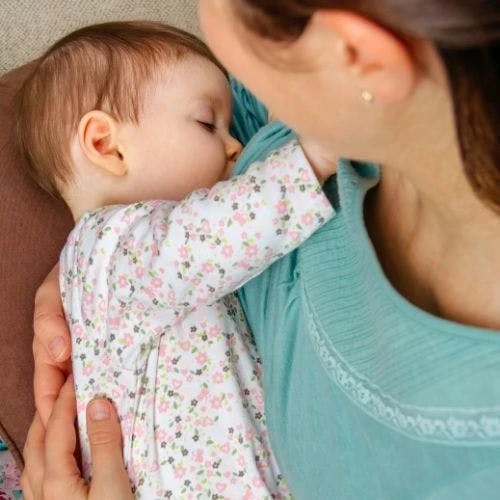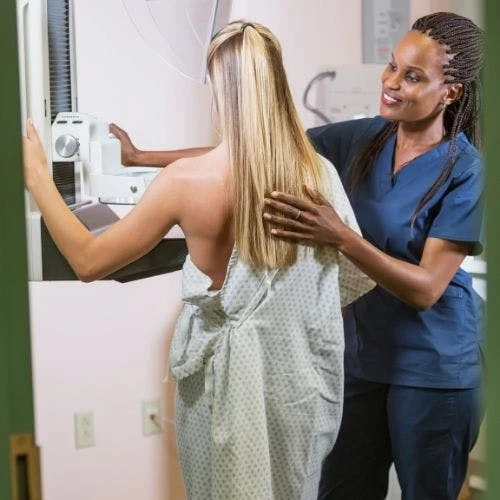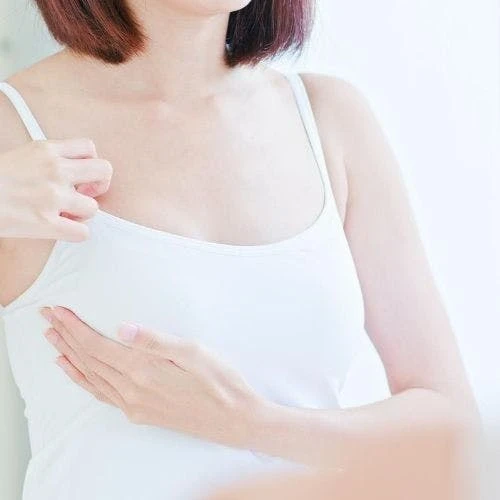Symptoms Of Breast Cancer
Breast cancer symptoms can be different for different people. Some patients who have breast cancer may have no symptoms at all. One study reports that around 25% of breast cancers are found by self-examination (1). Some signs and symptoms of breast cancer include:
- A lump in the breast, the chest wall, or in your armpit
- A change in the size or shape of your breast
- Focal or localized breast pain or nipple pain
- Changes in the skin of the breast like redness, flakey skin, skin irritation that may look like an orange peel, or skin dimpling.
- Nipple discharge in one or both breasts (could even be bloody in some cases)
- Breast swelling or breast thickening
The normal shape and size of a breast is unique to that individual. Therefore, it is important to know how your breast feels. Doing regular monthly, midcycle self-examinations can help you understand what is normal for you. You may notice that your breasts change as you have different hormonal changes in your body. Things that can affect the way your breasts look and feel include pregnancy, medications, your menstrual period, and aging. During pregnancy itself, some women develop breast lumps. Any breast changes must be evaluated by a physician right away.
Causes Of Breast Lumps
While most breast lumps are not cancerous, all breast lumps need to be evaluated by a doctor. The most common cause of breast lumps are breast cysts, which are benign, fluid filled, may be painful, and are often related to fluctuations in hormonal.
Cancer is also a cause of breast lumps. When you feel the lump it may have edges that are not smooth and are more irregular and hard. But, some breast cancers can present as smooth and round as well. Because of this, any breast lump should be evaluated by a doctor as soon as possible.
The Importance Of Screening Mammograms
Related: 8 Scientific Breastfeeding Benefits
Often times breast cancer has no symptoms at all. For those of average risk, a yearly mammogram should be done starting at the age of 40. For a person of high risk such as a family history of premenopausal breast cancer, screening may start earlier. In some high-risk cases, genetic testing can test for genetic mutations (BRCA1 or BRCA2) that greatly increase the risk of developing breast cancer.
Annual mammograms initiated at 40 years of age can reduce breast cancer deaths by 40% (2). While mammograms do not pick up breast cancer in every single case, they are the most important tool for screening those of average risk and saving lives. It is important to stay vigilant, do monthly self-exams, and modify your lifestyle to reduce your risk factors. Breast cancer risk is increased by things like drinking alcohol and smoking. There is growing evidence that exercising regularly and eating a more plant-based diet could also help reduce your risk of breast cancer (3).
Sources
- Roth MY, Elmore JG, Yi-Frazier JP, Reisch LM, Oster NV, Miglioretti DL. Self-detection remains a key method of breast cancer detection for U.S. women. J Womens Health (Larchmt). 2011 Aug;20(8):1135-9. doi: 10.1089/jwh.2010.2493. Epub 2011 Jun 15. PMID: 21675875; PMCID: PMC3153870.
https://www.ncbi.nlm.nih.gov/pmc/articles/PMC3153870/ - Seely JM, Alhassan T. Screening for breast cancer in 2018-what should we be doing today? Curr Oncol. 2018 Jun;25(Suppl 1):S115-S124. doi: 10.3747/co.25.3770. Epub 2018 Jun 13. PMID: 29910654; PMCID: PMC6001765.
https://pubmed.ncbi.nlm.nih.gov/29910654/ - Harvie M, Howell A, Evans DG. Can diet and lifestyle prevent breast cancer: what is the evidence? Am Soc Clin Oncol Educ Book. 2015:e66-73. doi: 10.14694/EdBook_AM.2015.35.e66. PMID: 25993238.
https://pubmed.ncbi.nlm.nih.gov/25993238/
We discuss products we think are useful to people. If you buy something through our links, we may earn a commission. Remember to check with your personal physician to see if a product recommended is right for you.








